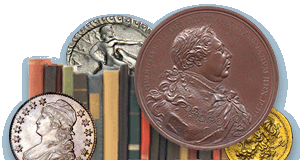
PREV ARTICLE
NEXT ARTICLE
FULL ISSUE
PREV FULL ISSUE
MORE ON THE NEW SRI LANKA 2000 RUPEES NOTEDr. Kavan Ratnatunga's article on the new Sri Lanka banknote has been published in that country's Sunday Times. Here's an excerpt - see the complete article online. -Editor On August 29 the Central Bank of Sri Lanka (CB) marked its 75th anniversary with the release of a commemorative Rs 2000 note. At first glance, the blue, green, and purple design is striking, and the inclusion of landmarks and motifs seems celebratory. Yet, a closer look reveals several unusual features, departures from tradition, and subtle signals worth reflecting on. This Rs. 2000 issue also debuts the signature of Sri Lanka's President, Anura Kumara Dissanayake, in his capacity as Minister of Finance. Their bilingual titles appear in Tamil in addition to Sinhala. Perhaps the most significant innovation is the wording of the legality clause. Since 1951, Lankan banknotes carried a long declaration of validity, initially only in English and since 1956 only in Sinhala. The legality statement has been shortened to just say This Note is issued on behalf of the Government of Sri Lanka, excluding and is legal tender in Sri Lanka for the payment of any amount , to enable it to be stated in all three languages, fulfilling an agreement with Sri Lanka Human Rights Commission in 2012. The Sinhala and Tamil word Banknote is better than Note, when the use as currency is excluded. This is a first since the Dutch Kredit Brief that had the legality in Dutch, Sinhala, and Tamil.
Another departure from precedent: unlike all previous commemorative notes, CB did not issue a special folder for this Rs. 2000 release. Collectors accustomed to official presentation packs will moan the absence. On the reverse, is a mosaic of 169 dots, arranged in a 21 by 12 rectangular grid to fill the outline of the island. Their purpose is obscure and defies easy interpretation. Are they a modernist flourish, a security feature, or an allegory yet to be explained? The Rs. 2000 note embodies both progress and paradox. On the one hand, it represents a long-overdue embrace of trilingual inclusivity, a symbolic shift toward equality. On the other hand, its design choices — unexplained dots, luxury apartments, and Nelum Kuluna — raise questions about symbolism and appropriateness.
To read the complete article, see:
To read the earlier E-Sylum article, see:
Wayne Homren, Editor The Numismatic Bibliomania Society is a non-profit organization promoting numismatic literature. See our web site at coinbooks.org. To submit items for publication in The E-Sylum, write to the Editor at this address: whomren@gmail.com To subscribe go to: Subscribe All Rights Reserved. NBS Home Page Contact the NBS webmaster 
|

